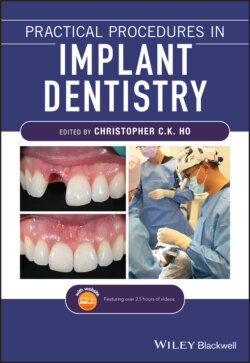Читать книгу Practical Procedures in Implant Dentistry - Группа авторов - Страница 61
7.3 Nasal Cavity
ОглавлениеThe inferior border of the nasal cavity is relevant to oral implantology due to its proximity to the oral cavity and tooth root apices. It consists of the anterior nasal spine and the maxillary alveolar process located anterior to the incisive canal and the hard palate or palatine process of the maxilla and horizontal plate of the palatine bone posterior to the incisive canal, when viewed sagittally through the midline. The nasal cavity provides the superior limit to the volume of the maxillary alveolar process available in the anterior region for implant placement, with the buccal plate providing the anterior limit while the palatal plate or incisive canal provides the posterior limit.
The nasal cavity is very well vascularised, with the sphenopalatine artery, a branch of the internal maxillary artery, providing the largest contribution of arterial supply. It is a branch of the sphenopalatine artery that anastomoses with the greater palatine artery via the incisive canal. The nasopalatine nerve, a branch of the maxillary division of the trigeminal nerve (CN V2), provides sensory input for the nasal cavity and follows the path of the sphenopalatine artery through the incisive canal where it anastomoses with the greater palatine nerve.
